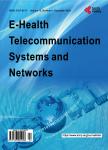Privacy Preserving Risk Mitigation Approach for Healthcare Domain
Privacy Preserving Risk Mitigation Approach for Healthcare Domain作者机构:Department of Computer Science College of Computer and Information Sciences King Saud University Riyadh Saudi Arabia
出 版 物:《E-Health Telecommunication Systems and Networks》 (远程医疗系统和网络(英文))
年 卷 期:2018年第7卷第1期
页 面:1-42页
学科分类:1002[医学-临床医学] 100214[医学-肿瘤学] 10[医学]
主 题:Access Control Healthcare HIPAA Risk-Aware Risk Mitigation
摘 要:In the healthcare domain, protecting the electronic health record (EHR) is crucial for preserving the privacy of the patient. To help protect the sensitive data, access control mechanisms can be utilized to restrict access to only legitimate users. However, an issue arises when the authorized users abuse their access privileges and violate privacy preferences of the patients. While traditional access control schemes fall short of defending against the misbehavior of authorized users, risk-aware access control models can provide adaptable access to the system resources based on assessing the risk of an access request. When an access request is deemed risky, but within acceptable thresholds, risk mitigation strategies can be exploited to minimize the risk calculated. This paper proposes a risk-aware, privacy-preserving risk mitigation approach that can be utilized in the healthcare domain. The risk mitigation approach controls the patient’s medical data that can be exposed to healthcare professionals, according to their trust level as well as the risk incurred of such data exposure, by developing a novel Risk Measure formula. The developed Risk Measure is proven to manage the risk effectively. Furthermore, Risk Mitigation Data Disclosure algorithms, RIMIDI0 and RIMIDI1, which utilize the developed risk measures, are proposed. Experimental results show the feasibility and effectiveness of the proposed method in preserving the privacy preferences of the patient. Since the proposed approach exposes the patient’s data that are relevant to the undergoing medical procedure while preserving the privacy preferences, positive outcomes can be realized, which will ultimately bring forth quality healthcare services.



